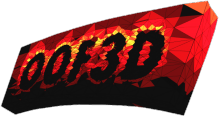Summary
Computational materials design requires a variety of tools to model processing-structure-property relationships across a range of time and length scales. This work focuses on the development and promotion of trusted open-source tools and establish community-based best practices for structure-property linkages at the microstructure scale.
The objectives for this project include the following:
- Improve material design efficiency by linking existing physics-based microstructure models with machine learning (ML) surrogate models. For example, using AI to augment crystal plasticity models in the finite element code, OOF, and integrating active learning into a microstructure descriptor framework.
- Improve and extend mesoscale modeling frameworks to facilitate their integration into the multi-scale materials design software stack.
- Develop plug-and-play user materials descriptions to use in the OOF code as part of the crystal plasticity implementation.
- Implement state of the art data assimilation techniques into the materials design software stack to more closely align experimental and simulation data to facilitate the development of digital twins
- Improve community coherence by generating best practices and recommended software standards based on open science and FAIR data principles.
- Develop a FAIR compliant Metadata standard for Phase Field Data using sematic web resources (link)
- Facilitate development of materials design platforms / apps with plug-and-play material descriptor library
- Improve development standards in the phase field community via a trusted set of benchmark problems
Description
Materials Digital Twins for AM
Current methodologies for designing digital twins in additive manufacturing (AM) exhibit two main approaches: one involves AI models. that establish a direct correlation between input and output
properties, overlooking materials structure and characterization, while the other employs high-fidelity materials models, but lacks AI surrogate models, thus neglecting the essential uncertainty
quantification (UQ) needed to develop a credible AM Digital Twin [1], [2], [3].
The challenge lies in the complexity of creating a research-oriented AM digital twin that integrates both high-fidelity and AI surrogate models in conjunction with the requisite experimental data assimilation (DA). The goal is to construct a digital twin for a prototype AM build system that seamlessly aligns experimental and simulation event management, as well as DA, within a unified framework. This stochastic framework meticulously captures uncertainties stemming from both experimental and model sources and propagates these uncertainties to the critical metrics at the micro, meso, and part scales of the system, encompassing various materials properties, structures, anomalies, mechanical and thermal characteristics, surface attributes, as well as part distortion and integrity. The stochastic framework incorporates experimental DA, high-fidelity physics-based models, empirical models, heuristics, and AI surrogate models (such as Gaussian Processes) for each component within the system. Consistent descriptions of microstructure and physics variables using reduced order representations are essential across all models and experiments to ensure compatibility in the posterior estimation [4], [5]. By leveraging the AI surrogate models to generate uncertainties and steer future experimental and modeling event control within a feedback loop using DA and active learning (AL), the framework facilitates the construction of desired linkages in process, structure and properties.
Current use-cases are focused on Ti-6Al-4V and IN625 (Ni-based superalloy) with the end goal of coupling materials-based AI surrogate models with physics-based models (such as melt pool dynamics and microstructure property models) for AM .
Microstructure-level Structure-Property Tools

OOF: Finite Element Analysis of Microstructures enables materials scientists calculate macroscopic properties from images of real or simulated microstructures. It reads an image, assigns material properties to features in the image, and conducts virtual experiments to determine the macroscopic properties of the microstructure. More information is available here. Current efforts are focused on integrating crystal plasticity into the code. Small deformations have been successfully implemented into OOF. In collaboration with CHiMaD partners, supervised and unsupervised deep learning methods are used with transfer learning principles develop an AI augmented crystal plasticity model.

PFHub
The phase field community hub is a community effort and data infrastructure to facilitate the development of benchmark problems to compare and contrast code used for solving phase field equations and to provide methods for evaluating the performance and accuracy of phase field codes. There are currently 8 benchmarks available ranging from spinodal decomposition to homogeneous nucleation. Semiannual workshops are held to develop and test new benchmarks and foster community engagement.

